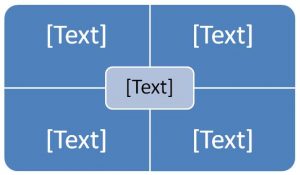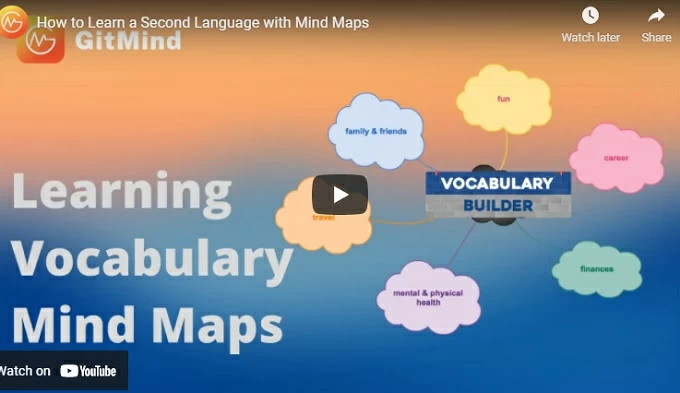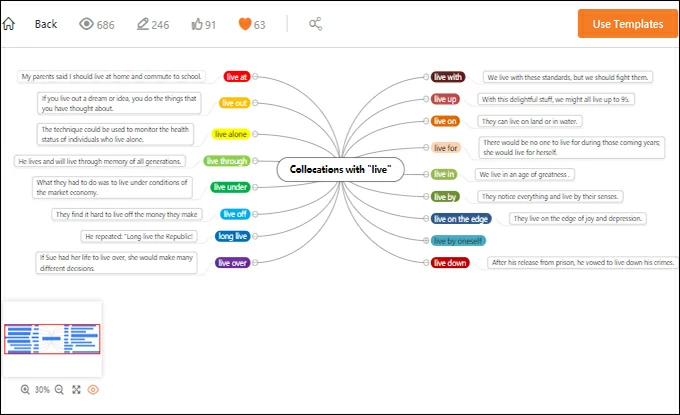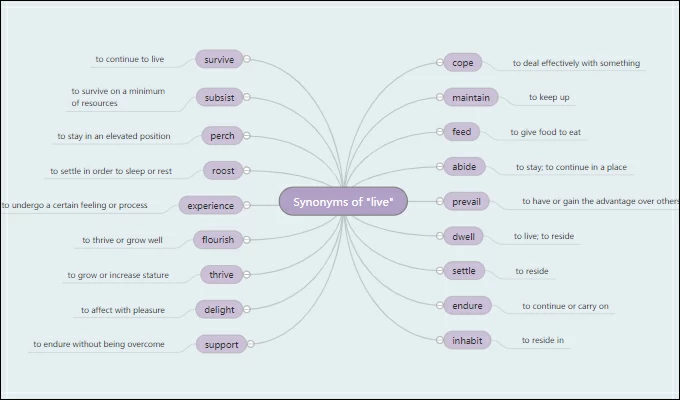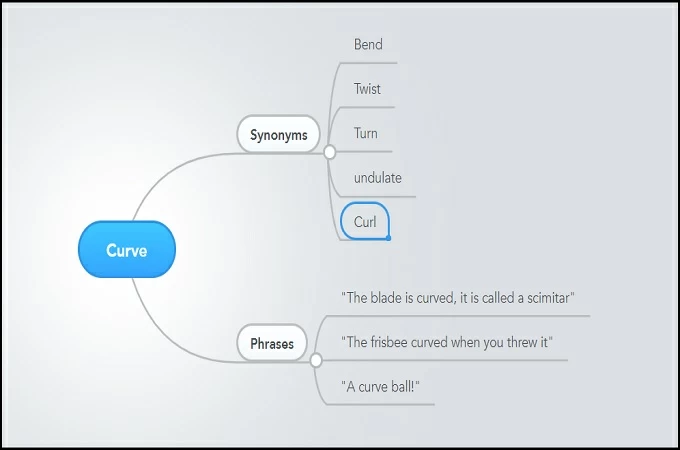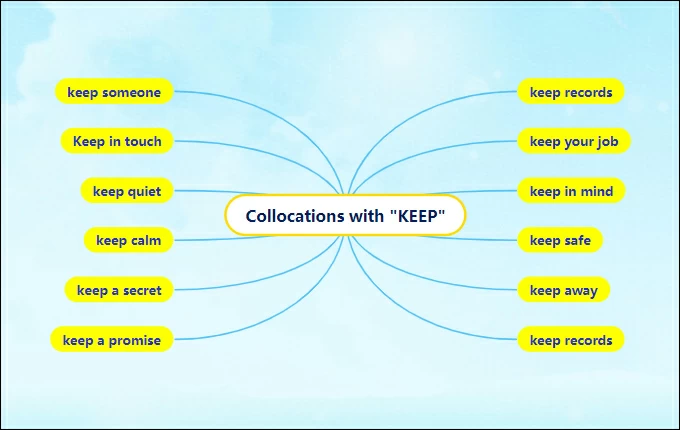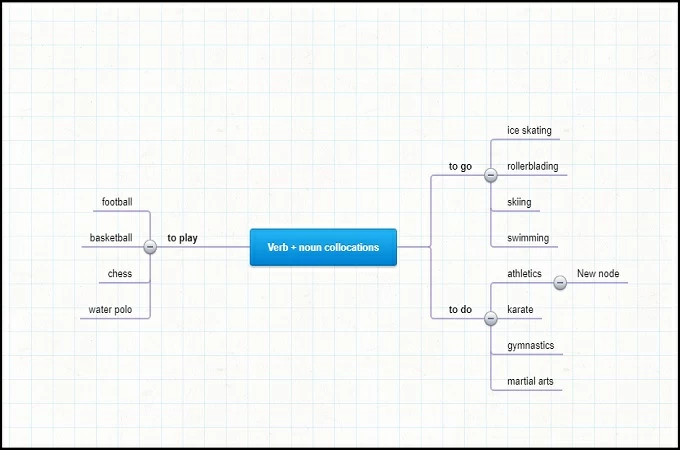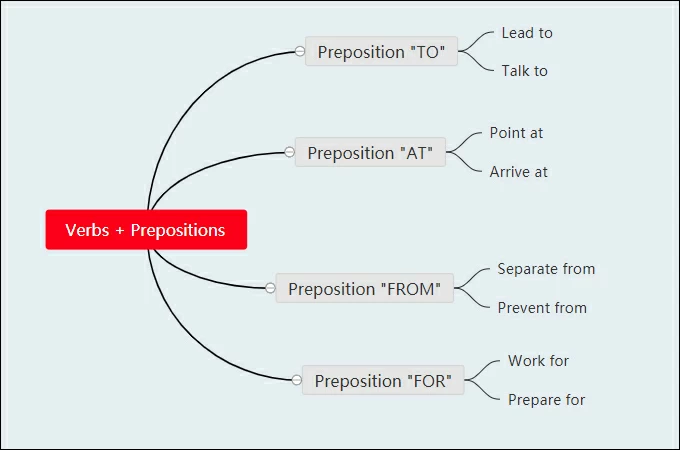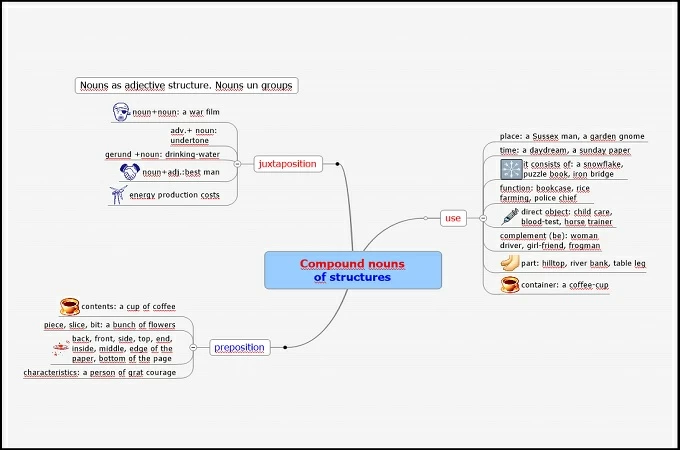In this article, we explain how you can improve children’s vocabulary using word maps as graphic organizers. We’ve included a variety examples and blank word map templates – all free for you to download.
You might also find it useful to read our article, ‘How Can I Improve My Child’s Vocabulary?‘, where we discuss other important aspects of vocabulary development.
Disclaimer: We support the upkeep of this site with advertisements and affiliate links. We may earn a small commission if you click on the ads or links or make a purchase. There is no additional cost to you if you choose to do this.
Contents:
- Introduction
- Types of word Maps
- What Should Be Included in a Word Map?
- How to Teach Word Mapping
- Example Word Maps
- Useful Links
- Blank Word Map Templates
- Further Information
- References
Introduction
There are a variety of different styles of word maps and a number of different terms are used to describe them. For example, they are sometimes called ‘vocabulary maps’, ‘semantic maps’ or ‘concept of definition maps’.
However, no matter what term is used to describe them, all word maps serve a similar purpose. They’re all designed to help children see the relationships between words, knowledge and concepts by organising the information in a visual framework.
Visual representations of information are know as graphic organisers in education circles and Dr Robert Marzano found that these strategies were particularly effective when he compiled his meta-analysis of classroom instruction techniques.1
Combining linguistic information with non-linguistic representations (imagery) utilises what psychologists call the ‘dual coding theory’. According to Marzano and others, the more we use both systems of representation, the better we are able to understand and recall knowledge. Essentially, dual coding gives us two ways of processing and remembering information rather than just one.
Types of Word Maps
Word maps can be constructed in different ways – some are structured as simple tables, whereas others have more complex diagrammatic or pictorial forms. And there is also some variation in the details included in different styles of word maps.
Specialist software can be purchased to construct graphic organisers, but other products that are widely available, such as Microsoft Word or PowerPoint, can also be used to make templates. For example, the SmartArt function in PowerPoint and Word provides a wide choice of graphics, including the following examples:
You can also design your own style of word map templates using tables, shapes or text boxes in Word or PowerPoint, or you can use or adapt some of the blank word map templates we’ve included in this article.
No single style of diagram or table has been shown to be more effective than others. The important thing is that the word map should help to structure and organize the information in a meaningful way.
And it’s not essential or even important to use graphics from computer software. You can use paper templates or simply hand-draw the diagrams on blank paper.
In fact, there may be some advantages in getting your child to handwrite the information rather than type it. That’s because students who take notes by hand seem to learn conceptual information better over the long-term than students who write their notes on laptops.2
Back to contents...
What Should Be Included in a Word Map?
The simplest word maps usually include a definition, a synonym and a sentence containing the word. The short videos below show some relatively simple variations:
More elaborate word maps might contain an assortment of the components listed below:
-
- Definition – this could be copied straight from a regular dictionary, or it might be a simplified version that’s more accessible to children. We’ve included some links to child-friendly sources of information in this article. It’s also important to consider alternative definitions if the word has more than one meaning.
- Synonyms – see if you can prompt your child to think of some synonyms. Ask them, ‘what is this similar to?’ Or, ‘what other words do you know that mean the same thing as this word?’ Use a thesaurus to find more examples.
- Antonyms – ask your child, ‘what is the opposite of this?’
- Word structure/origins – identifying common root words, prefixes or suffixes can help children understand the meaning of words (and this can also help with spelling). See below for links that can help you find word origins.
- Related Words – recognising related words can also improve a child’s understanding and widen their vocabulary.
For example, if the new vocabulary word was the adjective ‘expensive’, you might also include the adverb ‘expensively’, the nouns ‘expense’, ‘expenses’ and ‘expenditure’ and the verbs ‘expend’ and ‘spend’.
You don’t need to explain the correct grammatical terminology for each word if your child hasn’t studied much grammar in school yet. Just thinking about related words and how they might be used in different sentences can still be beneficial.
For some technical words, it can help to look beyond grammatical variations. For example, if you were introducing the word ‘soluble’ in a scientific context, it would also be helpful to consider the related words ‘solute’, ‘solvent’ and ‘solution’. All of these words start with ‘sol’, and probably originate from the Latin word ‘solvere’ which means ‘to loosen’ or ‘unfasten’.
You could discuss how molecules (or ions), which are stuck together in the solid form (the solute), work loose when they dissolve in a solvent to form a solution. Your child might notice that the word dissolve also contains ‘sol’.
-
- Example sentence(s) – if your child first encountered the new word in a book, you could copy the sentence from the book as one example and then help help them to make up a sentence of their own. You might want to help them construct more than one sentence if the word has more than one meaning so they can see how it’s used in different contexts.
- Pictures or examples – representing the meaning of words with concrete examples or images can improve a child’s understanding and make the information more memorable.
- Mnemonic / association – this might not be possible for every word, but see if there is a way of linking the word to something your child already knows. Considering the word structure and origins can sometimes help with this step.
The different sections on a word map could vary for different types of word. For example, you might choose some different categories for nouns than you would for verbs or adjectives.
The complexity of the word might also influence the amount of detail you include in a word map, but it’s probably better to put in a bit more information than to have too little…
Our brain is made up of an enormous network of neurons, and learning something new causes the brain to build connections between these neurons.
Cognitive neuroscientists tell us the more meaningful connections to prior knowledge we can make, the better will be our understanding and our ability to recall the information. 3,4
In the very simplified model below, the dots represent neurons (brain cells) and the lines represent the connections between neurons (synapses).
How to Teach Word Mapping
Before you get your child to complete a word map independently, it can be helpful to explain and model the process with them first.
Your child will understand the process better if you teach them using real examples, rather than just explaining the process in an abstract way. And it’s better for them to see a variety of examples instead of just one or two.
We’ve included several examples below, most of which are in a tabular form. Although tables aren’t as elaborate as some alternatives, they’re still a useful way of organising information in a logical order.
Even if you intend to construct a more diagrammatic style of word map, it can sometimes be helpful to compile the information in a table first.
Example Word Maps
You might find the links below helpful when you are compiling the information for word maps. Explain to your child that using information from a variety of sources will give them a more thorough understanding of a word.
Useful Links:
Vocabulary.com We mentioned this site in our article, ‘How Can I Improve My Child’s Vocabulary?’ As well as providing child-friendly definitions, it uses sophisticated computer algorithms to help children learn new words and can be played as a game. They ask questions about words in different contexts and also provide information about word structure for some words.
The Kids.Wordsmyth dictionary is a useful resource for finding simple definitions and related words.
Merriam-Webster’s Learner’s dictionary is designed for students with another fist language who are learning English. However, the definitions are also useful for children because they are generally shorter and use simpler language.
Thesaurus.com is great for synonyms and antonyms. It claims to be the world’s largest free online thesaurus.
Dictionary.com is useful for finding out about word structure because it provides information on word origins.
The Thinkmap Visual Thesaurus is an interactive dictionary and thesaurus which creates word maps of related words.
VISUWORDS™ is another interactive online graphical dictionary that shows creative associations between words.
IXL Learning cover 8000 skills in 5 subjects including phonics and reading comprehension. You can click on the following link to access a 7-day free trial if you live in the US.
If you live outside of the US, you can get 20% off a month’s subscription if you click on the ad. below:
Back to contents...
Blank Word Map Templates
Download the templates as PowerPoint slides if you want to edit them in some way. Download them as pdf documents if you want to use them as they are.
Further Information…
References
- Marzano, R. (2001), Classroom Instruction that Works, ASCD.
-
Take Notes by Hand for Better Long-Term Comprehension, Association for Psychological Research (April 2014): http://www.psychologicalscience.org/index.php/news/releases/take-notes-by-hand-for-better-long-term-comprehension.html
-
Learning in the brain: https://sites.google.com/view/efratfurst/learning-in-the-brain
-
Willingham, D. (2006), How Knowledge Helps, American Educator: https://www.aft.org/periodical/american-educator/spring-2006/how-knowledge-helps
The Core Vocabulary Project (CVP) Word Maps
A word map is a graphic organizer that supports connections among vocabulary and ideas. TextProject provides Word Maps for the Core Vocabulary-the most important words in written English. Three types of words maps are available for the core vocabulary: synonyms, morphology, and multiple meaning of words.
Freddy Hiebert (TextProject’s President & CEO) and colleagues (Hiebert, Goodwin, & Cervetti, 2017; Pugh & Hiebert, 2019) have used digital resources to establish that 2,500 families of words account for at least 90% of the total words in texts from Grades 1 through college. Freddy has labeled this group of words as the “Core Vocabulary.”
A frequent response to this finding is: “Please give me the list.” Lists of vocabulary have been many in the century since Thorndike (1917) published The Teachers’ Work Book. But no evidence has shown that moving students through a list results in a rich vocabulary. Only by connecting words semantically and morphologically do students expand their vocabularies.
The Core Vocabulary Project (CVP) aims to support students’ vocabularies through word maps of three kinds: semantic, word families, and multiple-meaning words. Each type of CVP Word maps represents a different form of the critical knowledge represented by the 2,500 word families.
THE THREE KINDS OF CVP WORD MAPS
Semantic maps: Semantic maps that connect central ideas are the foundation of the Core Vocabulary Project (CVP). Each key word that represents one of the 2,500 word families appears on a semantic map.
Key words appear on semantic maps in the grade bands where they first appear. Many more key words appear early in written English, which means that there are more word maps for earlier grades (K-1, 2-3) than for later grades (4-5, Middle+). The same concept often appears across several grade levels but with different key words.
Word-family maps. On each semantic map, several words are marked with a purple star. The purple star indicates the availability of a word-family map. In phase one of the CVP, word- family maps are provided for key words that have numerous family members and illustrate types of word families in English.
Multiple-meaning-word maps. At least two words on each map are marked with a pink heart. The pink heart means that a multiple-meaning-word map is available for that word. Many words, especially common ones, have multiple meanings. In the phase one of the CVP, multiple-meaning-word maps are provided for words that have especially distinctive meanings.
1Words with multiple meanings may appear in more than one word set. Because the key words for a family represent the most frequent form of a word, tense and inflection of words may not be consistent. In some cases, words that are central to a semantic cluster but are not among the 2,500 word families have been included.
Here are the semantic maps. Word-family and multiple-meaning-word maps are accessed through the semantic map.
-
Vocabulary Map Type
Semantic MapGrade Level
6 and aboveTopic
Academic Words -
Vocabulary Map Type
Semantic MapGrade Level
2-3Topic
Animals -
Vocabulary Map Type
Semantic MapGrade Level
K-1Topic
Animals -
Vocabulary Map Type
Semantic MapGrade Level
2-3Topic
Clothing & Accessories -
Vocabulary Map Type
Semantic MapGrade Level
K-1Topic
Clothing & Accessories -
Vocabulary Map Type
Semantic MapGrade Level
2-3Topic
Communication -
Vocabulary Map Type
Semantic MapGrade Level
4-5Topic
Communication -
Vocabulary Map Type
Semantic MapGrade Level
6 and aboveTopic
Communication -
Vocabulary Map Type
Semantic MapGrade Level
K-1Topic
Communication -
Vocabulary Map Type
Semantic MapGrade Level
2-3Topic
Describing Words -
Vocabulary Map Type
Semantic MapGrade Level
4-5Topic
Describing Words -
Vocabulary Map Type
Semantic MapGrade Level
6 and aboveTopic
Describing Words -
Vocabulary Map Type
Semantic MapGrade Level
K-1Topic
Describing Words -
Vocabulary Map Type
Semantic MapGrade Level
2-3Topic
Eating & Food -
Vocabulary Map Type
Semantic MapGrade Level
K-1Topic
Eating & Food -
Vocabulary Map Type
Semantic MapGrade Level
K-1Topic
Games & Fun -
Vocabulary Map Type
Semantic MapGrade Level
2-3Topic
Glue Words -
Vocabulary Map Type
Semantic MapGrade Level
K-1Topic
Glue Words -
Vocabulary Map Type
Semantic MapGrade Level
2-3Topic
Groups & Events -
Vocabulary Map Type
Semantic MapGrade Level
4-5Topic
Groups & Events -
Vocabulary Map Type
Semantic MapGrade Level
6 and aboveTopic
Groups & Events -
Vocabulary Map Type
Semantic MapGrade Level
2-3Topic
Homes -
Vocabulary Map Type
Semantic MapGrade Level
K-1Topic
Homes -
Vocabulary Map Type
Semantic MapGrade Level
2-3Topic
Human Body, Senses, & Health -
Vocabulary Map Type
Semantic MapGrade Level
4-5Topic
Human Body, Senses, & Health -
Vocabulary Map Type
Semantic MapGrade Level
6 and aboveTopic
Human Body, Senses, & Health -
Vocabulary Map Type
Semantic MapGrade Level
K-1Topic
Human Body, Senses, & Health -
Vocabulary Map Type
Semantic MapGrade Level
2-3Topic
Jobs & People -
Vocabulary Map Type
Semantic MapGrade Level
4-5Topic
Jobs & People -
Vocabulary Map Type
Semantic MapGrade Level
6 and aboveTopic
Jobs & People -
Vocabulary Map Type
Semantic MapGrade Level
K-1Topic
Jobs & People -
Vocabulary Map Type
Semantic MapGrade Level
2-3Topic
Making & Buying -
Vocabulary Map Type
Semantic MapGrade Level
4-5Topic
Making & Buying -
Vocabulary Map Type
Semantic MapGrade Level
K-1Topic
Making & Buying -
Vocabulary Map Type
Semantic MapGrade Level
2-3Topic
Movement & Actions -
Vocabulary Map Type
Semantic MapGrade Level
4-5Topic
Movement & Actions -
Vocabulary Map Type
Semantic MapGrade Level
6 and aboveTopic
Movement & Actions -
Vocabulary Map Type
Semantic MapGrade Level
K-1Topic
Movement & Actions -
Vocabulary Map Type
Semantic MapGrade Level
2-3Topic
Natural World -
Vocabulary Map Type
Semantic MapGrade Level
4-5Topic
Natural World -
Vocabulary Map Type
Semantic MapGrade Level
6 and aboveTopic
Natural World -
Vocabulary Map Type
Semantic MapGrade Level
K-1Topic
Natural World -
Vocabulary Map Type
Semantic MapGrade Level
2-3Topic
Academic Words -
Vocabulary Map Type
Semantic MapGrade Level
4-5Topic
Academic Words -
Vocabulary Map Type
Semantic MapGrade Level
4-5Topic
Academic Words -
Vocabulary Map Type
Semantic MapGrade Level
K-1Topic
Places, Directions, & Buildings -
Vocabulary Map Type
Semantic MapGrade Level
4-5Topic
School -
Vocabulary Map Type
Semantic MapGrade Level
K-1Topic
School -
Vocabulary Map Type
Semantic MapGrade Level
2-3Topic
Shapes, Numbers, Sizes, & Colors -
Vocabulary Map Type
Semantic MapGrade Level
K-1Topic
Shapes, Numbers, Sizes, & Colors -
Vocabulary Map Type
Semantic MapGrade Level
2-3Topic
Time, Measurement, & Money -
Vocabulary Map Type
Semantic MapGrade Level
4-5Topic
Time, Measurement, & Money -
Vocabulary Map Type
Semantic MapGrade Level
K-1Topic
Time, Measurement, & Money -
Vocabulary Map Type
Semantic MapGrade Level
6 and aboveTopic
Time, Measurement, & Money -
Vocabulary Map Type
Semantic MapGrade Level
2-3Topic
Traits & Feelings -
Vocabulary Map Type
Semantic MapGrade Level
4-5Topic
Traits & Feelings -
Vocabulary Map Type
Semantic MapGrade Level
6 and aboveTopic
Traits & Feelings -
Vocabulary Map Type
Semantic MapGrade Level
2-3Topic
Traveling -
Vocabulary Map Type
Semantic MapGrade Level
K-1Topic
Traveling
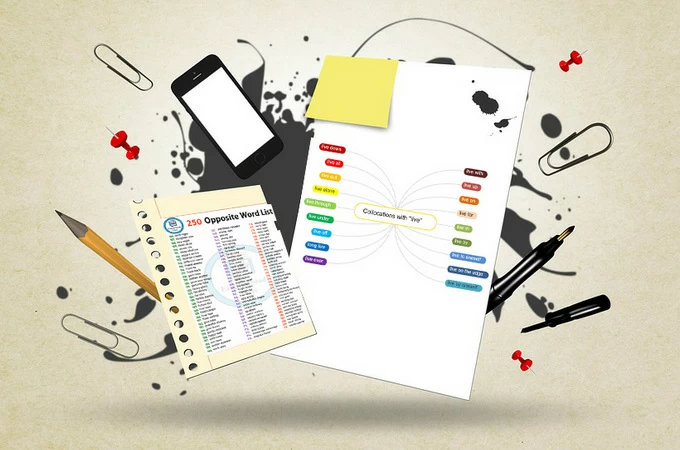
Vocabulary generally means the words within a specific language. With that being said, the English language probably has the most complex vocabulary since it is spoken in different parts of the world. This is also one reason why many people get confused, resulting in poor English vocabulary. However, if you want to expand your vocabulary significantly, then you can read the dictionary or create a vocabulary mind map. Using the latter will significantly improve your learning capabilities and information retention. On that note, you can check the guide below to see some sample mind map about vocabulary and its components.
Step by Step to Make Vocabulary Mind Maps
Edit this example
- Select specialized vocabulary words to map
There is no point in mapping every word that you already know. That is why it is highly advisable to create a vocabulary mind map example of words that you don’t usually encounter in a regular conversation. This way, you will be able to remember and know when you should use them.
- Check the dictionary for word meanings and pronunciation
Check the vocabulary’s connotation, synonyms, and collocations in the dictionary. Don’t be afraid of a large number of extensive implications. Researching beforehand will surely benefit you once you decide to make your vocabulary word map in the future.
- Visualize it with mind maps
Get started with GitMind, a free mind mapping maker. With the flexible use of GitMind, you are able to accomplish the making process in a few minutes and enhance your comprehension level of the target language.
DOWNLOAD
Use of Vocabulary Mind Maps
- Synonyms
- Collocations
- Combinations
Mind Maps for Synonyms
Edit this example
Have you ever been trapped in a situation where you are racking your mind to articulate something clearly and accurately? You will find several terms in all languages that mean almost the same thing – they are “Synonyms”. Collecting synonyms on a vocabulary mind map will help you delve deeper into their origins and absorb their complexities. Put the word LIVE as the central node of your mind map, and then add its synonyms to enlarge the branches that need detailed explanation. The following is a mind map for synonyms of “live” by GitMind.
Another vocabulary mind map example about synonyms can be found on Mindmeister. As the example provides, it shows the word “Curve” at the center. After that are some words that have the same meaning as the main word which is “Curve.” Apart from that, it also shows the different usage of these words in a sentence. You can check this mind map template from the link provided.
Mind Maps for Collocations
Collocations are two or more words that are often used together in a way that happens more often than by accident. For example, “do homework” and “save time” are common collocations we used usually. While we don’t use “write homework” and “economize time”. Using collocations correctly shows an outstanding command of the language and the ability to speak the language well can impress others. In order to make a mind map of collocations, you need to first work out the term you want to collocate with or the certain scene you need collocations for. The following vocabulary concept map template is about the collocations with “live”.
Phrasal Verbs are combination of two or more verbs, noun + adjectives or prepositions, or both. This is still one way of using action words but in a more complex form. Although created by using different words, the meaning of Phrasal Verbs differ from the terms used to create them. Above is an example of vocabulary concept map of phrasal verbs and collocations created by Mind42 to help you further understand.
Mind Maps for Combinations
All of us know that words have different combinations in English grammar, resulting in different grammatical constructions. Verbs occur most often, so here is a mind map on the common combination categories. You can pick one of the divisions as the central topic to make a vocabulary mind map easier. It’s better to make more maps of mind than gather them in one map.
The vocabulary word map above is from Mindmanager. It provides the different noun combinations and their corresponding usage. You can download this template from the official website of Mindmanager.
Conclusion
Expanding one’s vocabulary mostly relies on reading and studying. However, it never hurts to use a vocabulary mind map now and then to expedite the learning process. Additionally, a dictionary is one of the most useful books that you can use to learn new words and their proper usage. On that note, the vocabulary mind map examples mentioned above will guide you toward faster learning. Now that you understand the use of vocabulary mind maps, you will need some help on How to Create A Beautiful Mind Map -Tips & Principles. Let’s learn English vocabulary effectively!
Mind maps are diagrams that help us organize information visually. They are mostly used for brainstorming, note-taking or summarizing. I started using them to help students learn vocabulary 5 years ago and created what I call my word map.
The aim is to explore a specific word or lexical phrase. Students can go online or use their dictionaries to complete the map. They can also use web tools like visuwords. I usually ask them to select the most difficult word from the lesson but of course you can choose the item you want them to explore. You can also turn it into a game, e.g. don’t write the word and let us guess it after we read your notes.
It can be done individually, in pairs or groups. Good back-up/fast-finishers/homework task too!
In word association, I encourage students to write hyponyms eg if the target word is vehicle, they can write car, motorcycle, truck etc. They can also include items that collocate with the target word.
In pronunciation, if your students understand the phonemic script, they can transcribe the words. They can write words that rhyme, some students find this helpful. E.g. ache rhymes with take.
Needless to say, the one they enjoy the most is drawing a picture!
Based on observation, this activity:
- is an engaging way to retain new vocabulary.
2. trains students to explore words by going beyond a mere definition.
Feel free to download and share my template.
Teaching online? You can use this Jamboard version and also make it a collaborative task. Students use stickies to write their notes on the word map-see cover photo to get an idea. Remember to create your own editable copies, this one is view-only. Drawing can be tricky online- they can draw in the frame using the stylus on the board, their finger on the app, or cursor in a web browser.
Enjoy and share!
References:
An ELT Notebook: An ELT Glossary : Hyponymy
Mind map – Wikipedia
Using Mind Maps as an Assessment Tool – Freeed.com
This work by Rachel Tsateri is licensed under a Creative Commons Attribution-NonCommercial-ShareAlike 4.0 International License.
Teachers, are you wondering how you can use Visual Thesaurus word maps to introduce new concepts to your students? Check out this excerpt from Sharon Walpole and Michael C. McKenna’s Differentiated Reading Instruction for some ideas.
CONCEPT OF DEFINITION
What Kind of Reader Will Concept of Definition Help?
Sometimes you will have to develop knowledge of Tier 3 words — words for which students have much less background. Concept of definition is a strategy useful for developing an understanding of words that represent entirely new concepts for young learners. It is likely to be especially useful for teaching content-specific vocabulary important to grade-level goals.
What Is the Instructional Focus of Concept of Definition?
The focus of this strategy is building conceptual knowledge by teaching new concepts in direct relationship to known ones. This strategy relies on the creation of a semantic organizer and is sometimes called word mapping. The word map that is created in the course of this instruction makes explicit the connections of a new word to known words and concepts.
Where Does Concept of Definition Come from?
This instructional strategy is based on an ancient idea, first discussed by Aristotle. He suggested that the definition of a noun must include the category to which the concept belongs as well as features that distinguish it from other members of that category. The notion of using a simple diagram to teach these relationships is far newer (Schwartz & Raphael, 1985).
What Materials Are Needed for Concept of Definition?
In order to implement this strategy, you need a word map that allows students to show connections. This word map might be drawn on the board, presented with an overhead projector, or duplicated on paper for students to use. A simple word map has a space for the word, the connections to its superordinate category (the class to which it belongs), its characteristics or attributes, and some examples. Figure 6.3 provides an example of such a map. In it, the word poultry is shown to be a member of the category meats. Specific characteristics are provided along with three examples.
How Do You Prepare for Concept of Definition?
This strategy is only useful when the target word is a member of a specific category, with particular characteristics and examples. However, many content-area terms are of this kind! The strategy is useful both for developing new concepts and also for teaching children to generate definitions as they are learning new words.
How Do You Implement Concept of Definition?
This strategy is implemented first with known concepts so that children grow accustomed to how the word maps work. Then, gradually, it is used to teach less familiar concepts. For example, you could introduce word maps with the concept of a flower, with which the students are already familiar. The word map would indicate that a flower is a type of plant and that flowers have petals, stems, leaves, and roots. The map might include roses and daisies as examples of flowers. In presenting the map, you would point out that grass (among other types of plants) is not included because it is not a flower. Once students understand what a word map is, you can use this strategy to teach words and concepts directly as part of your content-area instruction, or you can use it either before or after a read-aloud. We do not think it would be appropriate during a read-aloud, as teaching an individual word might take as long as 5 minutes — too long to stop during reading without compromising comprehension.
How Do You Know If Concept of Definition Is Working?
You know this strategy is working when children show evidence that they have learned the concepts targeted and when they can use the map on their own or during discussion to formulate and remember definitions. As with all vocabulary strategies, the goal is to teach the particular words deeply and also to teach wordlearning strategies so that children can benefit more from incidental word-learning opportunities.
From Differentiated Reading Instruction by Sharon Walpole and Michael C. McKenna. Copyright 2007 by Guilford Press. All rights reserved. Reprinted with permission of Guilford Press.
What the strategy is:
Students create a visual «mini map» of each vocabulary word, by printing the word in the center and drawing branches from the word that include synonyms, antonyms, examples, parts, pictures, etc. Later, the individual mini word maps can be included on a larger map to show how the vocabulary words relate to each other.
Teacher preparation:
Prepare a short list of words to learn (limit to 5-10 at a time) and their definitions. Provide students with a worksheet of mini-maps or individual index cards for the words. Also provide colored pencils (I like the erasable type) or markers, thesauruses, and later, chart paper. Decide what should be included in the mini maps (see examples in the File Cabinet).
Why it is effective:
Word maps provide relationships and a visual representation for students. Using color-coding (colored pencils or markers) helps the brain remember the information even better!
Examples/Handouts:
Online graphical dictionary at http://www.visuwords.com
Word mapping software for purchase at www.visualthesaurus.com
Word Map worksheet and Mini Word Map Example in the File Cabinet
Click on Word Walls Photostory (toward the end of the 4th column) from Muhlenberg County Schools, KY for a quick video.

